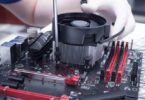Google’s Augmented Reality Microscope to Detect Cancer
When we hear the word cancer most of us go into shock. It is more the un-treatability of the disease rather than anything else that most gets to us. Sometimes it is even too far along to do anything but brace for the end. But the case of cancer is even worse in places where treatment is expensive or beyond the scope of many. At a recent event held at the American Association for Cancer research, Google unveiled a revolutionary form of cancer detection, called an augmented reality microscope that helps in detecting cancer in real time.
The whole process of seeking treatment, then discovering the cancer and the type and how far along it has progressed all takes up a lot of time and thus ultimately has a bearing on the quality of life for the individual. Therefore Google believes that the entire process of cancer detection could benefit from deep learning tools.
Adopting Augmented Reality Microscope in the process of cancer detection:
Using deep learning tools in the detection of cancer while it may be effective and quick would never the less be expensive. Another solution then thought of by Google was to use something similar yet feasible, something that could be used on by a small lab or even by developing countries for that matter.
Thus came along augmented reality microscope. This augmented reality microscope could greatly benefit organizations with limited funds in an easy to use manner. It also makes the work of cancer detection fast as it does everything in real time.
Another advantage thought of by the team behind the augmented reality microscope was that this method of detecting cancer would increase awareness and adoption of deep learning tools not only when it comes to cancer but also in the medical field in general.
What does an Augmented Reality microscope do?
Using just an ordinary light microscope, which is something used worldwide by pathologists, Google added AI tech and augmented reality features to it. Then Google used neural networks to identify cancer cells in human tissue.
Finally a slide containing human tissue is seen under the modified microscope. The image of the slide is sent to a computer where the AI system identifies cancer causing cells in the human tissue demarcated with an outline which is then shown on the slide a person is looking at.
So a person then sees on the same slide, the same human tissue, but now with an outline depicting the cancer cells in the tissue. The entire process is done in real time and even accounts for when the pathologist moves the slide to get a better look or to view the tissue at a different angle.
At present Google has tested the augmented reality microscope in detecting breast and prostate cancers. Besides testing for other cancers as well, Google also states that the augmented reality microscope could be also used in detecting tuberculosis and malaria and other infections in the human body.







